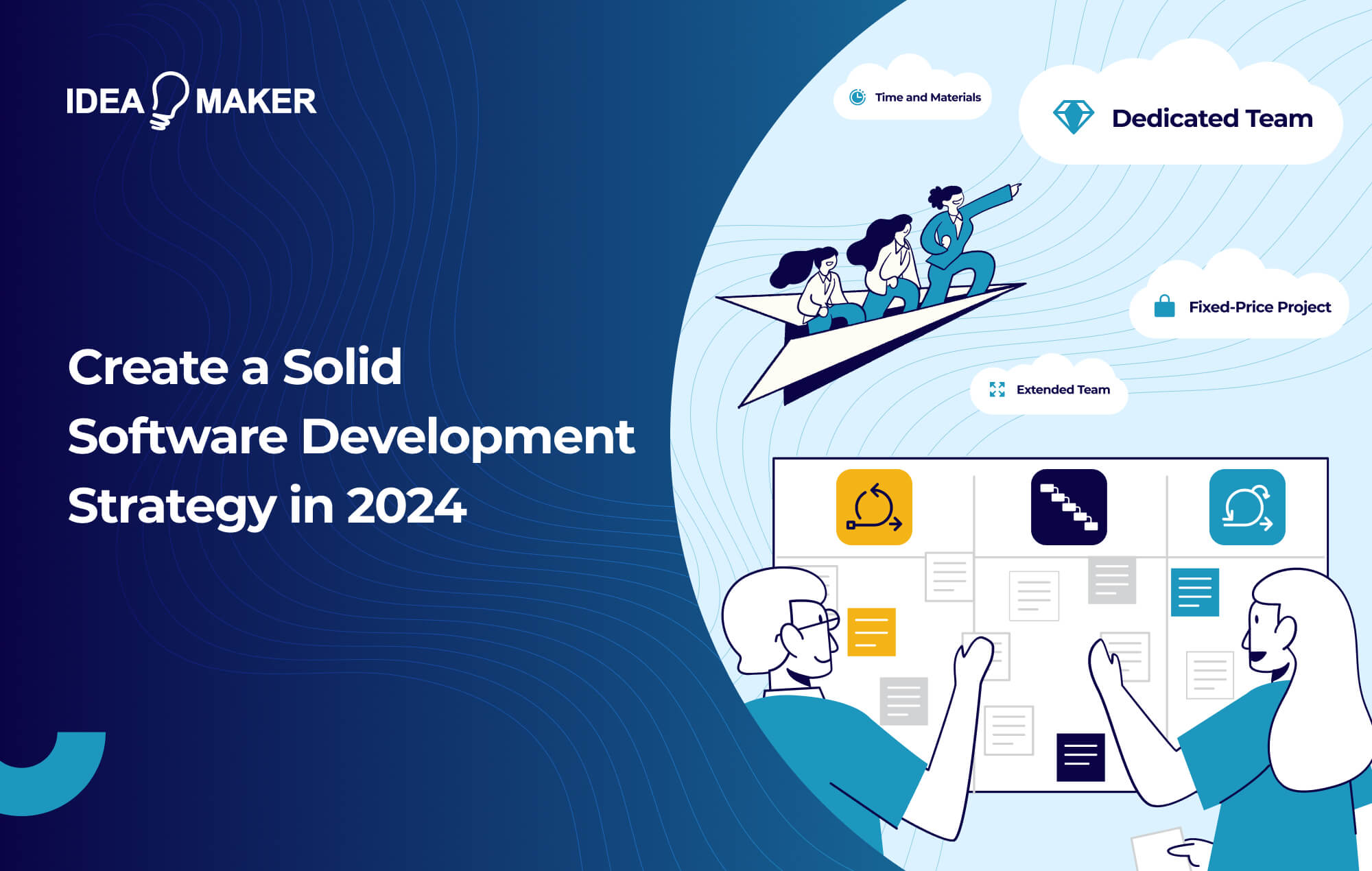Table of Contents
As more people are investing in their health in the wake of the pandemic, it’s no surprise that one of the latest trends in the world today is fitness. This focus on health and fitness has ultimately led to the rise of Peloton and other workout applications, which provide a means of exercising from the comfort of your own home. These apps have experienced massive growth in the last few years, with the user penetration projected to reach about 9.76 percent this year, and expected to climb further to 12.21 percent in 2027.
These numbers show that the fitness tracking app industry is thriving and will continue to expand for many years to come. So why not build one of your own? While it may sound daunting at first, this article will guide you through the ins and outs of fitness apps, as well as the proper steps to take in order to create a platform that’s as successful and appealing as Peloton.
What You’ll Learn In This Post
- What Is Peloton?
- Peloton Market Overview
- Popular Features of Peloton
- 4 Steps to Build a Workout App Like Peloton
- Marketing Considerations
- Monetizing Your App
- Idea Maker’s Experience In Mobile App Development
- Frequently Asked Questions
What Is Peloton?
The fitness equipment company Peloton launched an app that offers thousands of classes, curated music, expert-level instructors that can be utilized without equipment. This means that you can participate in yoga sessions, cycling, running, and meditation classes that are available at any time.
While the company also has fitness equipment on the market such as the Peloton bike and treadmill, the app can be used on its own. Users who own equipment, however, can choose to incorporate the Peloton app into their existing workout routine.
Peloton Market Overview
Founded in 2012, Peloton has become a well-known fitness equipment and online media company that’s located in New York. The company started with the Peloton bike, which is their main product, before they went on to create the Peloton app.
Generally, the Peloton app had a drastic rise in its global subscription revenue in 2022, increasing from $181 million in 2019 to $1.9 billion in 2022. Additionally, the company reached over $1 billion in the second quarter of 2021, and reported$678.7 million in revenue just in the second half of 2022.
There was also a huge spike in the Peloton app user subscription in 2022 compared to 2019. In 2022, Peloton boosted its subscription to almost 2.33 million connected fitness subscribers. This is a drastic growth, given that they had only 0.36mm subscribers in 2019.
Popular Features of Peloton
In order to build an app like Peloton, you’ll need to consider its features and how they can be implemented into your own fitness platform. Here are some of Peloton’s top features that you should know about:
Spotify Integration
With the Spotify integration feature, users can play audio, share data, and receive music data while working out. They can share different Spotify options like albums, playlists, and artists and manage collaborative playlists.
This feature, however, will only be accessible by Spotify users because it allows them to link their account to Peloton and have their playlist available for use during workout sessions.
Live Class Schedule
This feature allows users to not miss out on a class they want to participate in. If the user sees a class that they find interesting but it has not started yet, they can use the live class schedule feature, so they receive a reminder before the class begins. This ensures the user does not miss out on opportunities they would love.
Apple Watch Integration
The Apple Watch integration feature is another amazing feature you will need to incorporate into your fitness app if you want to build an app like Peloton. Generally, the user can track their heart rate and calories burnt during a workout session, and start, pause, or end a workout session through their Apple Watch. This is a great feature if you want your app to also be a fitness tracking app.
4 Steps to Build a Workout App Like Peloton
You need to know the steps involved in building a fitness on demand app like Peloton. Below are the important steps you will need to follow to ensure that you build a successful workout app of your own.
1. Determine Niché
The first thing you will need to do when trying to build an app like Peloton is to determine the niche of your app. Would you like to focus on a particular sport or workout routine? What kind of audience are you focusing on? Will the application be for a specific audience, or will it be curated for a specific demographic?
Asking yourself these questions will help you determine your fitness app’s niche. Determining your niche will be beneficial to you in the long run, as it will make it easier for you to choose what features you will be implementing into your app.
2. Design Your Workout App
After you have determined what niche you will be, the next stage is working out the design of your app. This is where you choose your branding, the style you would like your app to have, the color scheme, the theme, and the logo.
You should design your app based on its required features while adding your brand’s touch. It’s best practice to first create a wireframe that will outline the functionality of your app to see what the overall design will look like before you carry out the design on your app.
3. Develop Your App
The next stage is the development stage. This is the most crucial stage because you must pay attention to every detail; however, if you do not know about app development, you should leave it to the professionals.
You will need to hire an expert app developer to ensure your app becomes exactly what you envisioned. Before you invest in mobile app design and development services, it is important to research the app development team thoroughly to ensure that they are the best fit for your brand.
Additionally, you should check out their portfolio to see if their previous work is relevant to your needs and verify that they offer post-release support.
4. Deliver Your Peloton-Like App
The final stage of the workout app-building process is delivering your finished application to the app stores. You can make your app available to the public by delivering it to Google Play and Apple App Store, making it accessible for Android and IOS users.
After your app has been delivered to the public, you should continue to check user reviews, monitor the app for bugs so they can be fixed, and regularly release updates to keep users intrigued.
Marketing Considerations
Marketing your GPS fitness tracker app is another essential component for ensuring that users find your app. Here are a few marketing strategies to build your app’s growth.
App Store Optimization
App Store Optimization (ASO) is aimed at improving your app’s user appeal and visibility in the app stores and increasing your app’s conversion rates in order to get more downloads. To rank high, you have to find a way to convince people to click and download your app when they see it.
App Store Optimization works similarly to Search Engine Optimization (SEO) for websites, as SEO also focuses on improving a site’s visibility by optimizing the website’s technical configuration, link popularity, and content relevance.
Google Search Ads
Pay-per-click (PPC) ads are a type of online advertising technique that includes the compensation of a publisher every time a user clicks on the link being advertised on their page. You can place ads for your workout app on Google search results to drive traffic to your app’s store page. Generally, this is a great exposure strategy to gain more users.
Social Media Marketing
Social media marketing is when businesses pay social media platforms like Facebook, LinkedIn, Twitter, and YouTube to promote their material with particular new target groups that are likely to be interested. This can be done either by boosting original content or by creating original adverts. You can also use free content posts, photographs, videos, memes, and stories, on your page to advertise your app in an organic way.
Monetizing Your App
Now that you have built a user base through marketing, you can begin monetizing your app. This can be done in a variety of ways, such as offering paid workouts or an upgraded subscription.
Paid Workouts
You can charge users to unlock new workouts after they have had a taste of them through the free trial option. If they enjoyed the workout session after their free trial, the users would pay to get access to new workouts.
Subscription Model
You could also employ the SaaS business model, which allows users free access to the app, but withholds certain features unless a fee is paid. This is a great monetization option, as users typically want access to other exclusive features that will benefit them.
Idea Maker’s Experience In Mobile App Development
At Idea Maker, we have built many successful custom applications, including I Am Available and Quick Friends. Our designers and developers are dedicated to listening to our client’s needs and navigating them through the entire process. Schedule a call with us today to learn more about how we can help bring your mobile app vision to life.



